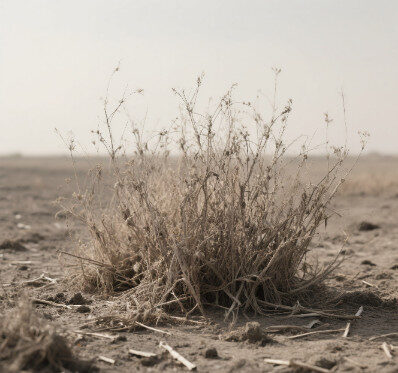Maximizing corn yields in China requires effective weed control, as weeds aggressively compete for nutrients, water, and sunlight, significantly reducing crop productivity. Herbicides are crucial for managing weed infestations in corn fields. This guide provides an in-depth analysis of commonly used herbicides, including their mechanisms of action, application strategies, and best practices. It aims to help farmers optimize weed management while minimizing environmental and crop risks.
Types of Corn Herbicides
Herbicides used in corn cultivation fall into two main categories: soil-applied (pre-emergence) and post-emergence (foliar). Each type serves a distinct purpose in weed control.
1. Soil-Applied (Pre-Emergence) Herbicides
These herbicides are applied to the soil surface before or immediately after planting and create a chemical barrier that prevents weed germination or kills emerging seedlings. Key examples include:
- Acetochlor: Effective against annual grasses (e.g., barnyardgrass and crabgrass) and certain broadleaf weeds. It inhibits cell division and protein synthesis in developing roots and shoots.
- Atrazine: It provides broad-spectrum control against both broadleaf weeds and grasses. However, its residual activity in soil can impact subsequent crops, requiring careful rotation planning.
- Metolachlor/S-metolachlor: It is an improved variant of acetochlor, offering enhanced efficacy and crop safety, particularly in sensitive corn varieties.
- 2,4-D (2,4-dichlorophenoxyacetic acid): It primarily targets broadleaf weeds, but becomes less effective as they mature. Timing of application is critical to avoid drift and damage to neighboring crops.
Success Factors:
- Apply before weed emergence.
- Ensure adequate soil moisture for activation.
- Follow dosage recommendations to prevent crop injury.
2. Post-emergence (foliar) herbicides:
These herbicides are applied after weeds have emerged and target actively growing plants through leaf absorption. They are further classified as selective or non-selective.
(A) Selective herbicides:
These target specific weed types while preserving the corn crop.
- Nicosulfuron: Controls grasses (e.g., foxtail and crabgrass) and some broadleaf weeds by inhibiting the ALS enzyme and disrupting amino acid synthesis.
- Mesotrione (methylsulfentrazone): Effective against broadleaf weeds and certain grasses, it causes leaf bleaching by inhibiting the HPPD enzyme.
- Bromoxynil: A rapid-contact herbicide that acts directly on plant cell membranes to control tough broadleaf weeds.
- Fluroxypyr: Targets persistent broadleaf weeds, such as bindweed and thistles, by inducing hormonal disruption.
(B) Non-selective (broad-spectrum) herbicides:
These kill all green vegetation and are used for pre-plant or non-crop area treatments.
- Glyphosate: A systemic herbicide that translocates to the roots and disrupts EPSP synthase, halting protein synthesis. It is widely used, but careful timing is required to avoid corn damage.
- Paraquat: A fast-acting contact herbicide that is not recommended due to toxicity concerns and bans in many regions. It acts through oxidative stress, rapidly destroying cell membranes.
Application Methods and Best Practices
1. Acetochlor (pre-emergence)
Targets: Crabgrass, foxtail, goosegrass, and select broadleaf weeds.
Dosage: Apply at 1.5–2.0 L/ha pre-planting or immediately after planting (based on local recommendations).
Key notes: Ensure adequate soil moisture. Upgraded versions (S-metolachlor) offer greater safety.
2. 2,4-D Butylate (Broadleaf Control)
Targets: Pigweed, lambsquarters, and bindweed.
Pre-emergence: 300–500 mL/ha (72% formulation).
Post-emergence (corn at the 4–5 leaf stage): 200–300 mL/ha.
Caution: Avoid drift to sensitive crops (e.g., soybeans, cotton) due to volatility.
3. Nicosulfuron (post-emergence)
Targets: Grasses and broadleaf weeds (e.g., pigweed and nightshade).
Dosage: 40–60 mL/ha (4% formulation) at the 3–5 leaf stage of corn.
Warnings: Do not use on sweet or seed corn. Do not mix with organophosphate insecticides.
4. Atrazine (Dual-Action)
Pre-emergence: 2.0–2.5 L/ha
Post-emergence: 1.5–2.0 L/ha.
Key considerations: – Long soil persistence. Rotate crops to prevent residue buildup.
5. Mesotrione (Post-Emergence)
Targets: Pigweed, velvetleaf, and grasses.
Dosage: 80–120 mL/ha (5% formulation) for spring corn and 60–100 mL/ha for summer corn.
Advantages: Safe for corn at the 5-leaf stage and later.
Key Considerations for Effective Herbicide Use
1. Precision Timing:
- Pre-emergence herbicides must be applied before the peak of weed germination.
- Post-emergence herbicides are most effective on small weeds (two to four leaf stage).
2. Environmental Awareness:
- Avoid applying herbicides during droughts or heavy rains to prevent runoff or ineffectiveness.
- Soil moisture enhances pre-emergence herbicide activation.
3. Resistance Management:
- Rotate herbicide modes of action (e.g., switch between ALS and HPPD inhibitors).
- Use tank mixes (e.g., atrazine and mesotrione) to broaden the control spectrum and delay resistance.
4. Safety & Compliance:
- Follow label instructions meticulously, including personal protective equipment (PPE) requirements.
- Thoroughly clean equipment to prevent cross-contamination, especially with volatile herbicides like 2,4-D.
5. Integrated Weed Management (IWM):
- Supplement herbicides with cultural practices such as crop rotation, cover crops, mechanical weeding, and precision planting techniques.
Conclusion
Optimal weed control in Chinese corn fields requires a strategic combination of pre- and post-emergence herbicides coupled with sound agronomic practices. Selecting herbicides based on weed spectrum, crop stage, and environmental conditions is paramount. Adhering to best practices enables farmers to enhance yields while mitigating risks of herbicide resistance and environmental impact. Farmers should consult local agricultural extension services for region-specific recommendations considering soil types, climate, and evolving weed dynamics. A sustainable approach to weed management involves integrating ecological strategies alongside chemical control to ensure long-term resilience in corn production.









